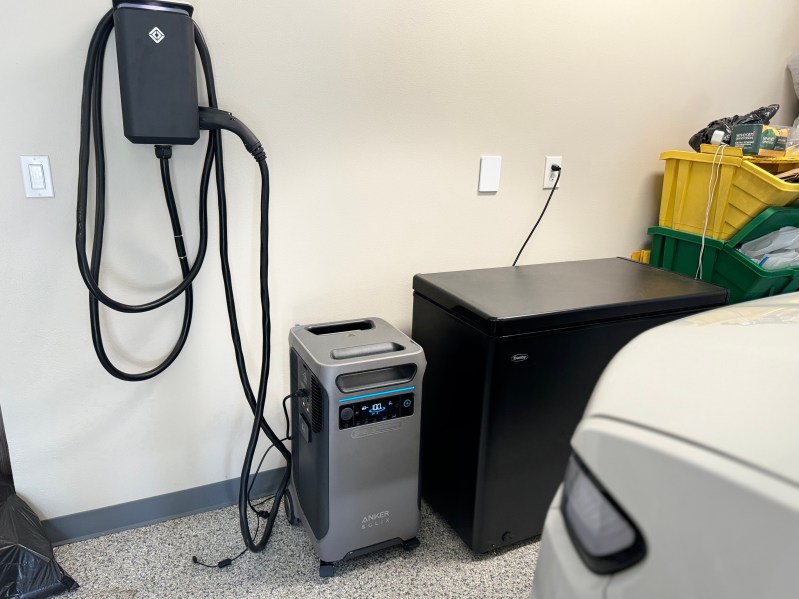
I have a confession to make: I care about the way my portable power station looks. Sure, a power station is not something you would generally care about when it comes to looks. It is, after all, most likely sitting in your garage alongside other clutter and items you might keep there. But I consider my garage another room of the house, and I made sure it looks that way, intentionally. Design and functionality are important to me, so that’s why I fell in love with the Anker Solix F3800 when I first saw it. From a distance, with the handle extended – and if you squint just so slightly – you’d think you were looking at a Rimowa carry-on luggage.
Portable power stations are all the rave these days. They come in all sorts of shapes, sizes, features and storage capacities. And even at the smallest sizes, they can be incredibly heavy. So you can imagine what a power station meant to back up your home would weigh (hint: the Anker Solix F3800 is over 100 lbs).
All about the Anker Solix F3800

So last year, when our power went out for over a week, I was on a mission to find a PowerStation that not only could back up my home if needed (although the garage freezer was the most important for me) but one that wouldn’t break the bank and would be portable enough to go camping with for a few days or more. Gas-powered generators were out of the picture – they would cost me upwards of $30K, and I knew that if I went too small on the storage capacity of a battery-powered backup, it wouldn’t last more than a day or two. The Anker F3800 fit the bill – good looking, portable enough with its wheels and handle, and the following features:
- 6000W AC Power output and 120V/ 240V dual voltage output (with up to 12,000W output if you combine with another unit)
- 84kWh battery that is expandable up to 53.76kWh if you combine it with another unit and add up to 12 additional batteries
- You can power your EV – but realistically, unless you have all of the additional batteries, I found this pretty useless
- You can add the Anker Solix Home Power Panel, which lets you plug the F3800 directly into your home and power your whole home if you want to (just make sure to add all the additional batteries)
- And, of course, you can add solar panels to recharge the F3800, which is great if you are camping for an extended time and plan on using the F3800 for your devices.
How to set up the Anker Solix F3800

Setting up the Anker F3800 is dead simple. Install the app, connect to your home WiFi, register the device, update the firmware if needed, and follow the instructions. Now, I didn’t have any complicated plans for the F3800 out-of-the-gate other than powering my freezer in the garage and taking it on road trips or the park on occasion, so it’s definitely overkill for what I needed it to do right now. But I guess that’s the great thing. You have a product that can do a lot – and I mean A LOT — of things but is still simple enough to figure out for small, basic things.
What we thought of the Anker Solix F3800

We were able to plug multiple laptops into the F3800 and charge our phones, lighting, and other gear while at the park or on the road with ease. When our power finally went out at home, the F3800 kicked in without an issue and powered our freezer—and through the app, you know how many days of charge you have left.
The car we use at home is a Rivian R1S, and yes, you can charge the Rivian for up to 1-2% of juice – about 6-8 miles until the F3800 runs out of battery life. I guess you pray that is enough to get you to a charging station if needed? But I wouldn’t keep this in your car for just that type of emergency. I suppose if you have two F3800s and all those additional batteries, you would be able to get up to 25-30 miles, but there have to be more efficient ways to get a charge in that scenario.
I’m excited to keep adding to the F3800 and to get it connected to the house and solar panels. Anker is always throwing sales, so keep an eye out — and there are dedicated groups on Reddit if you have any more specific questions.



